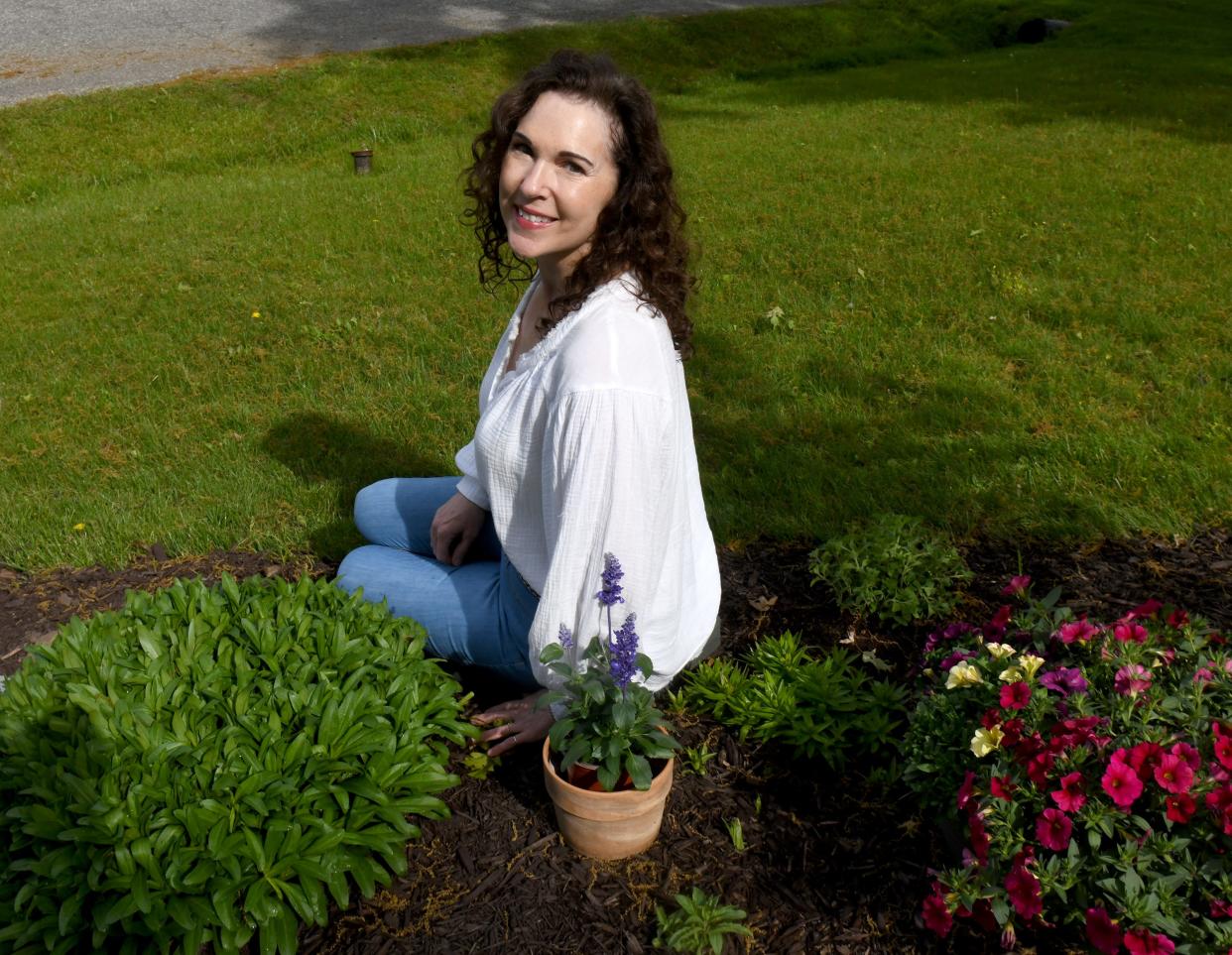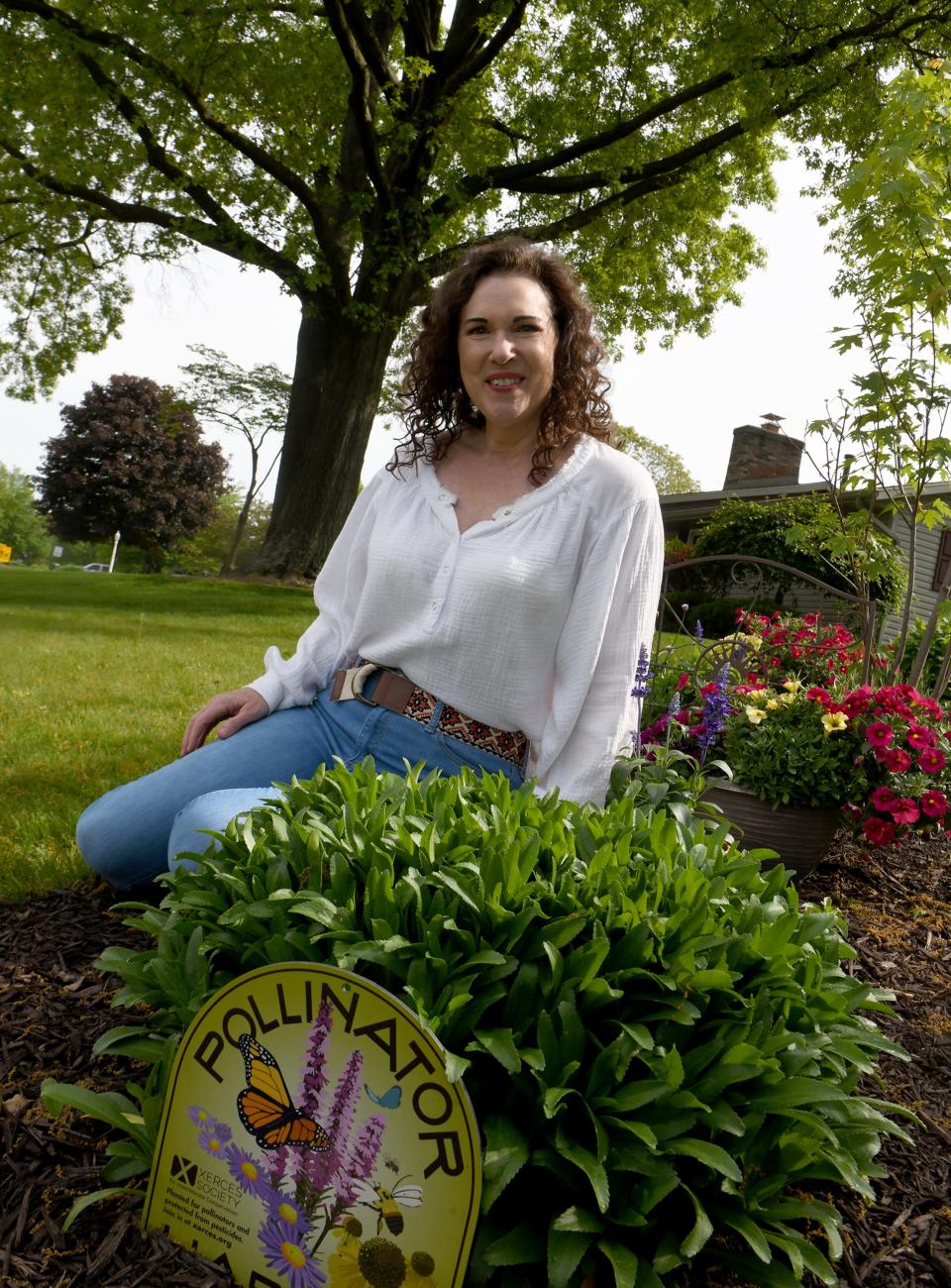Meet Tracy Teuscher: Founder of The Buzz Maker and Save Ohio Bees

Did you know that one in four North American bee species are facing extinction with the primary contributors being habitat loss, pesticide use, and rapid climate change? Or, that there are about 500 species of native bees in Ohio and that native bees pollinate more than 90% of all flowering species making them vital to the sustainability of the food web and healthy ecosystems including forests?
Tracy Teuscher, founder of The Buzz Maker and Save Ohio Bees, said it takes only five flowers to feed a baby bee.
She lives near Sippo Lake in Perry Township. She has an adult daughter, Sharon Teuscher, who is a graduate of Jackson High School and a magna cum laude graduate of Columbus College of Art & Design. She has two rescue cats: Willow and River.
Teuscher is a graduate of Richmond Heights High School, Richmond Heights, Ohio. She has a bachelor’s in psychology and a minor in music from the Indiana University of Pennsylvania and is working on a master’s degree in environmental studies at Prescott College.
She is an Ohio-certified volunteer naturalist and a certified eco therapist.
“I am not a beekeeper, instead native bees and habitat restoration and conservation are the focus of the initiative,” said Teuschner. “On my land, I’ve planted four pollinator gardens, a wildflower pollinator patch, and several shrub and tree species to support native bees and other wildlife. The www.saveohiobees.org website provides Ohioans with free native bee, plant, garden, project and educational resources along with access to citizen science apps, a bee blog, and special events.”
She offered one thing each of us could do to help save Ohio’s bees: “Plant native flowering plants, trees, shrubs, herbs, and/or vegetables, conserve wild landscapes, and avoid pesticides. Planting native plants in our own backyards and urban landscapes is a powerful way to help native bees and all beneficial pollinator species like butterflies, moths, and hummingbirds.”
Five questions with Marisa Rohn: President of Sisters of Charity Foundation of Canton

Why is it important to save Ohio’s (native/wild) bees?
Native bees are pollinator superheroes. They have co-evolved with the landscape over millions of years.
Because of this relationship, native bees are intimately tied to the ecosystem and human health and well-being.
For example, bumble bees are the most efficient pollinators in wild landscapes. It takes 400 mason bees to pollinate an acre of fruit trees — it would take 60,000 honeybees to do the same. Squash bees are specialists that have evolved to pollinate all squash plants from zucchini to pumpkins. Sweat bees contribute to forest biodiversity. And, these are only a few examples.
What are some of the reasons the habitat for bees has changed?
Habitat loss and fragmentation from overdevelopment are major issues for native bees. They need foraging, nesting, and resting areas. Native bees live for two to six weeks, so when they emerge, they need to have access to nectar, pollen and nesting areas.
Another major threat to native bees and other life forms is pesticide use which has increased dramatically in the past 50 years. Over 1 billion pounds of pesticides are used in the U.S. each year, and in the U.S. alone, pesticide revenue is about $15 billion per year.
Please don’t fear attracting gentle native bees, butterflies, moths, and other pollinators to your land! Native bees are gentle insects often referred to as non-stinging because it is rare for them to sting, many cannot sting, or sting responses are mild.
Severe sting reactions, allergic reactions, and dangerous swarm activity are related to honeybees, wasps (including yellow jackets), and Africanized honeybees (an invasive and highly aggressive species found in the southwest and California.)
You are also a public relations specialist and own your own company. Would you share a few words about what you do?
I am an accredited, award-winning, certified pro, and member of the PRSA Counselors Academy. I am a 20-year public relations leader in the field of strategic communication.
What or who motivates you in your personal and professional lives?
I have always been committed to living and working in ways that contribute to the well-being of others, including the most vulnerable and the more-than-human world.
I hope to contribute to developing sustainable and resilient communities in ways that embrace a continuum of care, rather than taking without caretaking.
If you had a few hours of downtime, would you prefer to read a book, listen to music or take a walk and why?
In addition to my work in communications, I am also a certified eco therapist who facilitates healing human-nature connections and experiences. My favorite ecotherapy practices include gardening, hiking, camping, and writing poetry.
Editor's note: Five questions with ... is a Sunday feature that showcases a member of the Stark County community. If you'd like to recommend someone to participate, send an email to newsroom@cantonrep.com.
This article originally appeared on The Repository: 5 questions with Tracy Teuscher of The Buzz Maker & Save Ohio Bees

